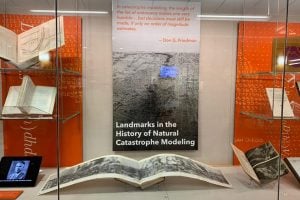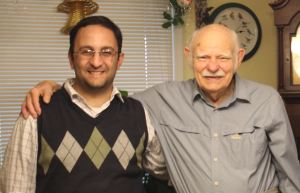
Gonzalo Pita, associate research scientist and director of the master’s program in systems engineering in the Whiting School of Engineering’s (WSE’s) Department of Civil and Systems Engineering, has contributed a significant study on the history and evolution of catastrophe modeling, providing insight on its role in disaster mitigation. The study, Foundation and Development of Natural Catastrophe Modeling, was published in the American Society of Civil Engineers’ Natural Hazards Review and traces the origins of modern catastrophe modeling, an essential tool to assess and mitigate impacts of natural disasters.
Catastrophe models are intricate simulations of the physical impacts of natural hazards on the population, buildings, and infrastructure over large areas. They combine extensive data from satellites, anemometers used to measure wind speed, seismographs, and other similar devices into algorithms that simulate the workings of nature and society. The models are used to inform the design of policies and financial instruments for nations to manage their natural risks, making the accuracy of these estimates crucial for preparation and response efforts, as the resulting policies can have lingering effects on a country.
Pita, an expert in catastrophe risk modeling who has conducted both research and applied work in this discipline and teaches a course in WSE, worked with the Johns Hopkins Sheridan Libraries in 2019 to develop an exhibit based on his findings. The exhibit was housed in Hopkins’ Milton S. Eisenhower Library and showcased artifacts and landmark publications documenting key milestones in catastrophe modeling, offering an historical perspective on how these models were created, refined, ultimately used to influence disaster preparedness and response strategies.
“The historical development of catastrophe modeling reveals a trail of assumptions, simplifications, strengths, and weaknesses, making the knowledge beneficial for anyone involved in model development and use,” Pita said. “Given the complexity of catastrophe models and the significant role that their outputs play as informational inputs for decision-making, it is essential that decision-makers, researchers, and model developers are informed about these factors.”
Following the exhibition with Johns Hopkins Sheridan Libraries, the materials were to be used for another physical exhibit in the National Institute of Standards and Technology’s (NIST) Gaithersburg location. Due to the COVID-19 pandemic, the exhibit was instead digitized, allowing for global accessibility. Soon after, NIST recognized the value of Pita’s research and incorporated the exhibit into its website, expanding upon Pita’s work by adding key milestones and advancements from its own recent studies in natural disaster research.
“The digitization of the exhibit made it possible for anyone, anywhere, to access this vital history,” said Pita. “When NIST added to the research, it really highlighted the importance of understanding the evolution of catastrophe models and their broader impact in society.”

Gonzalo Pita (left) with Don Friedman (right), the chief pioneer of catastrophe modeling.
Pita’s research also led him to an extraordinary opportunity: meeting Don G. Friedman, the chief pioneer of catastrophe modeling. The two met several times, with Pita gaining insight from Friedman’s innovative work spanning 1955 to the early 1990s, which laid the foundation for modern catastrophe models. As 2025 marks what would have been Friedman’s 100th birthday, the digital exhibit serves as a tribute to his pivotal contributions, including models used to guide federal risk-management policy in the U.S. and other countries.
The online exhibit is a valuable resource for researchers, policymakers, and disaster mitigation professionals, offering a comprehensive view of catastrophe modeling. Additionally, Hopkins students who take the natural disaster risk modeling course also benefit from the collection. As natural disasters continue to become more frequent and challenge resiliency, tools like this exhibit play an important role in advancing natural hazard forecasting and mitigation strategies.
“By preserving and expanding upon the history of natural disaster modeling, we’re able to honor those who pioneered the field and provide future researchers with the context needed to assess disaster risks and improve preparedness and response strategies,” said Pita.